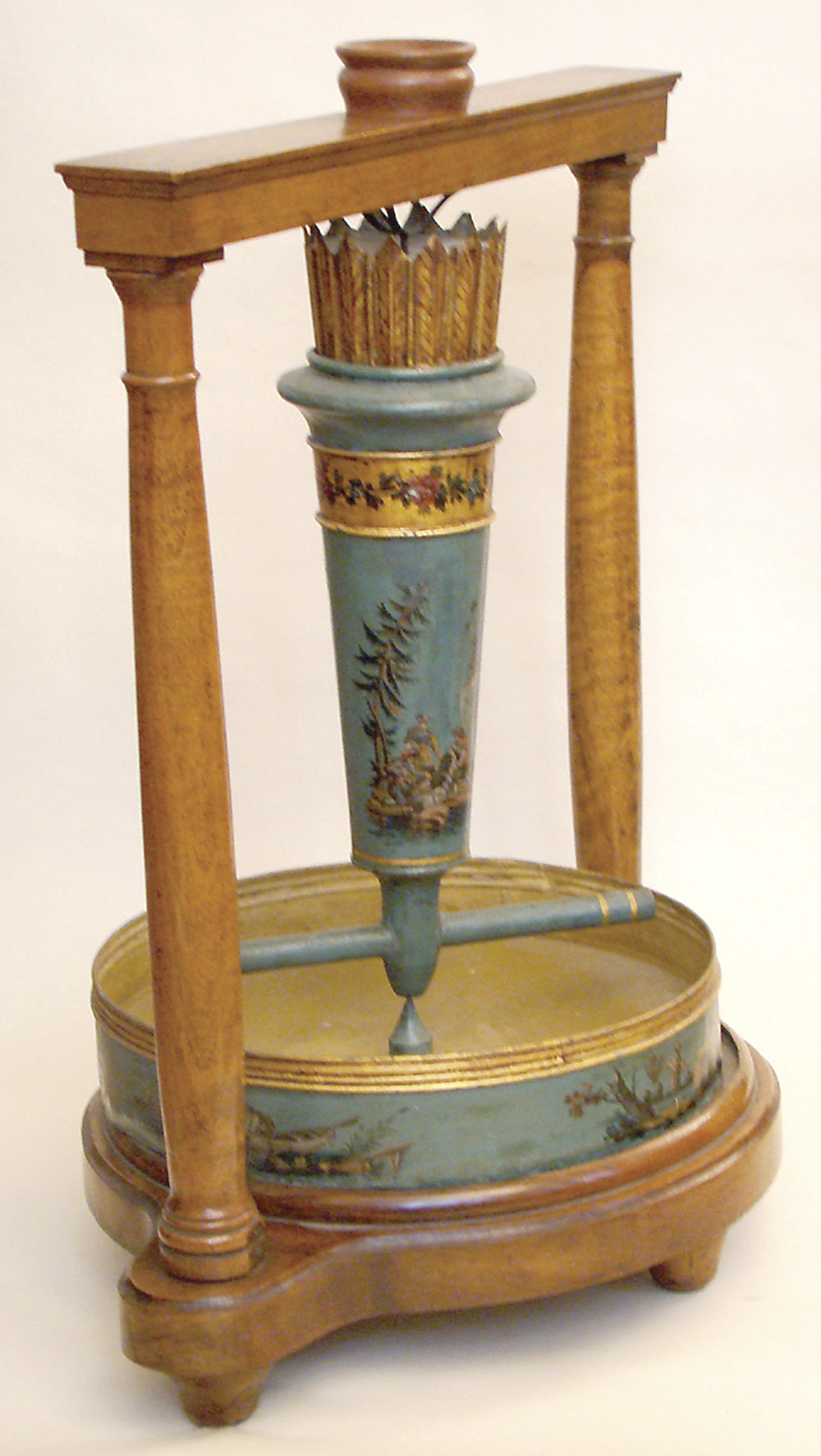Description
The Beauty of Water Power, probably French, c. third quarter 18th century, this a remarkable example of Revolutionary design, with fine painted images of water scenes. The device stands 23-1/4″ (59 cm) in overall height, and 20″ (51 cm) across. The base and framework are constructed of beautifully grained hardwood, perhaps French walnut. The frame supports a rotatable cone shaped as a quiver full of arrows, and a lower 12″ (30 cm) diameter pan, both made of sheet steel and painted blue-green with golden highlights, and with painted scenes of waterside activities (loading a small sailboat, fishing under a bridge, washing clothes, net fishing at sea, ferrying past home and windmill, and reaping the harvest of the sea beside a light house). The theme of water world is ubiquitous, the paintings in a Mediterranean spirit of the third quarter 18th century. Various clues are given by the styles of costumes, hairdos, boat trappings, etc. The instrument is likely Southern French, or possibly Italian or Spanish. Such painted decoration of scientific instruments is reminiscent of that of Abbé Nollet (1700 – 1770), although his decor was almost invariably floral (see Pyenson & Gauvin, The Art of Teaching Physics, 2002). Condition is fine noting a little worming to the wood, and some rather minor retouching of background paint.
The tourniquet is a fine demonstration of the conversion of potential energy to kinetic energy. One lifts a pitcher of water up in the air, against the force of gravity, pours it through the funnel on top, where it enters the hollow cone, exiting through right angled holes at the ends of the arms below. The exiting water is collected in the lower pan; meanwhile the entire cone assembly spins as the arms ³recoil² from the exiting water. The higher the liquid in the cone, the greater the pressure and thus the faster the rotation. It is a form of physics demonstration instrument that was popular from the 18th century into the 20th. This example is the finest we have seen, a wonderful combination of art and science.
Ask the Dealer
Dealer information
 TESSERACT
TESSERACT
David and Yola Coffeen both have enjoyed academic careers, as planetary astronomer and as linguist/educator. But since 1982 (yes, 1982!) they have been full-time dealers in early scientific and medical instruments, under the name Tesseract. Selling primarily by catalogue (over 100 issued so far) they also have a web presence at www.etesseract.com, and can be contacted at [email protected].












